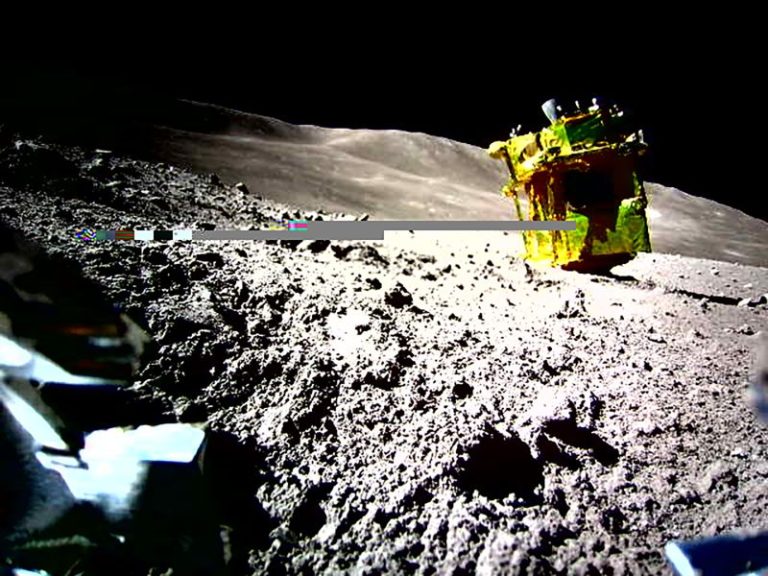Japan’s “Moon Sniper” robotic explorer is back in action after a power issue forced the spacecraft to shut down hours after landing on the moon 10 days ago, the country’s space agency said Monday.
The explorer executed a precise landing just after 10:20 a.m. ET on January 19 (12:20 a.m. January 20 Japan Standard Time), making Japan the fifth country ever to put a spacecraft safely on the lunar surface — but faced a critical issue almost immediately.
The spacecraft landed facing the wrong direction after one of its engines failed during landing, meaning its solar cells couldn’t generate electricity and it had to rely on limited battery power, according to the Japan Aerospace Exploration Agency (JAXA).
The agency shut off the lunar explorer to conserve its battery, saying it would automatically be restarted if its solar panel began generating power as the angle of the sun changed.
On Monday, JAXA announced on the social media platform X that it had “succeeded in establishing communication with (Smart Lander for Investigating Moon, or SLIM) last night and have resumed operations!”
The explorer has also captured new images of the lunar surface and returned them to the mission team on Earth.
The lander is equipped with a multi-band camera to capture images of the lunar surface. The mission team previously combined 257 images captured by SLIM right after landing to create a mosaic showcasing the landing site. Team members also nicknamed rocks of interest, choosing monikers that correspond to their size estimates.
A new image shared by the agency on Monday is a closeup of the rock “Toy Poodle.” The lander is designed to briefly study rocks that could reveal insights into the moon’s origins.
The SLIM lander’s mission can be considered at least a “minimum success” because it achieved a precise and soft lunar landing using optical navigation, the agency has said. Now, Japan aims to use the lander to collect unprecedented information about a region of the moon called the Sea of Nectar.
The spacecraft touched down near a crater called Shioli — a Japanese female first name pronounced “she-oh-lee” — which sits about 200 miles (322 kilometers) south of the Sea of Tranquility, the region near the lunar equator where Apollo 11 first landed astronauts on the moon.
When meteorites and other objects strike the moon, they create craters as well as rocky debris that litters the surface. These rocks intrigue scientists because studying them is effectively like peering inside the moon itself. Minerals and other aspects of the rocks’ composition can potentially shed more light on how the moon formed.
On Friday, NASA shared an image of SLIM’s landing site captured by the Lunar Reconnaissance Orbiter, which has been circling the moon since 2009. The image was captured five days after the Moon Sniper landed from an altitude of about 50 miles (80 kilometers).
Other space agencies and countries have attempted moon landing missions over the past year, leading to a historic first as well as some failures.
India became the fourth country — after the United States, the former Soviet Union and China — to execute a controlled landing on the moon when its Chandrayaan-3 mission arrived near the lunar south pole in August.
The new lunar space race is partly driven by countries’ desire to access water trapped as ice in permanently shadowed regions at the lunar south pole. It could be used for drinking water or fuel as humanity pushes the bounds of space exploration in the future.

